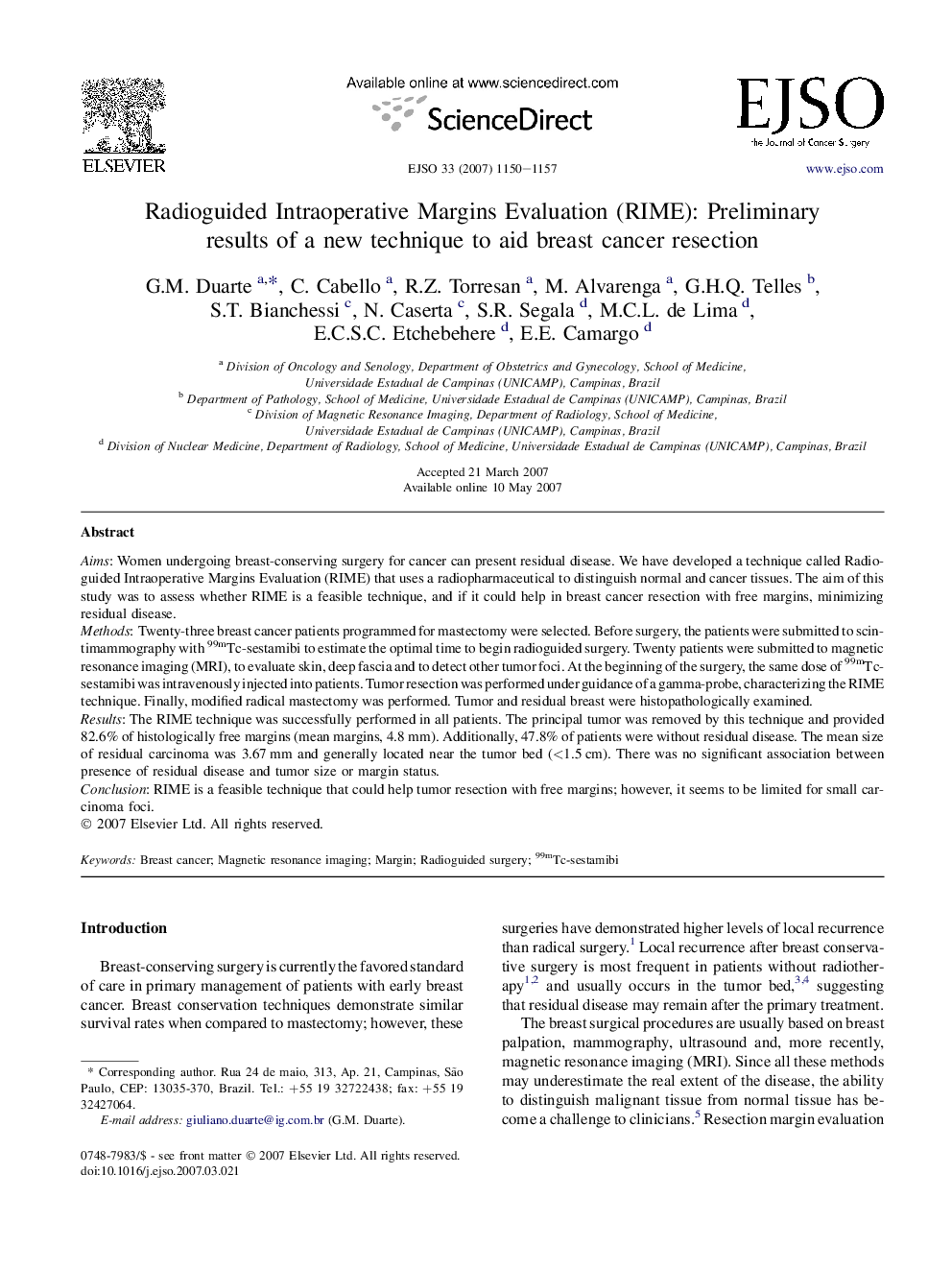| Article ID | Journal | Published Year | Pages | File Type |
|---|---|---|---|---|
| 3987483 | European Journal of Surgical Oncology (EJSO) | 2007 | 8 Pages |
AimsWomen undergoing breast-conserving surgery for cancer can present residual disease. We have developed a technique called Radioguided Intraoperative Margins Evaluation (RIME) that uses a radiopharmaceutical to distinguish normal and cancer tissues. The aim of this study was to assess whether RIME is a feasible technique, and if it could help in breast cancer resection with free margins, minimizing residual disease.MethodsTwenty-three breast cancer patients programmed for mastectomy were selected. Before surgery, the patients were submitted to scintimammography with 99mTc-sestamibi to estimate the optimal time to begin radioguided surgery. Twenty patients were submitted to magnetic resonance imaging (MRI), to evaluate skin, deep fascia and to detect other tumor foci. At the beginning of the surgery, the same dose of 99mTc-sestamibi was intravenously injected into patients. Tumor resection was performed under guidance of a gamma-probe, characterizing the RIME technique. Finally, modified radical mastectomy was performed. Tumor and residual breast were histopathologically examined.ResultsThe RIME technique was successfully performed in all patients. The principal tumor was removed by this technique and provided 82.6% of histologically free margins (mean margins, 4.8 mm). Additionally, 47.8% of patients were without residual disease. The mean size of residual carcinoma was 3.67 mm and generally located near the tumor bed (<1.5 cm). There was no significant association between presence of residual disease and tumor size or margin status.ConclusionRIME is a feasible technique that could help tumor resection with free margins; however, it seems to be limited for small carcinoma foci.
